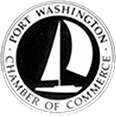Email marketing is the original form of reaching out to customers via digital means. Long before anyone had heard of Facebook or even Myspace, it was the way to connect with people online. Today, there are a host of different online marketing alternatives, but don’t be fooled into thinking that these have rendered email obsolete. Small businesses need to stay above the curve and in addition to a strong website design, an effective email marketing strategy is very important.
Think about this. Even in the social media age, 58 percent of us check our email before we do anything else online. Only 14 percent check social media first. Ninety-nine percent of us check our email every day, and most check it at least 20 times a day. In this smartphone age, we are typically informed of a new email in the same way as text message notification. Therefore our inbox is far more convenient than it was 10 or 15 years ago.
The message is clear – email is still the best way to get your message across to the most people. The optinmonster research referenced above shows that across industries, email has an average open rate of just under 23 percent. That’s compared with an engagement rate of less than one percent for Facebook, Twitter, and Instagram.

Having said that, it is nevertheless the case that a blanket bombing approach can do more harm than good when it comes to email. Recipients, as well as their spam filters, are more sophisticated than they once were. So how can you be sure that your email marketing campaign is hitting the mark?
If the click-through rate is the number of people who are attracted by the shop window and come inside, the conversion rate is those who eventually buy something.
Email Marketing Click-through rate
That open rate mentioned above might sound encouraging. But plenty of us will open an email so that it is marked read and out of the way. How many of those people actually read the email and interact with it? The click-through rate answers this question by telling you those recipients who didn’t just open your email marketing message but also clicked on a link to visit your website and to learn more about your offerings.
Email Marketing Conversion rate
Let’s cut to the chase; the reason for building email lists and reaching out to customers is to increase revenue. Conversion rate tells you the number of visitors who completed a desired action – and in most cases, that will be making a purchase or placing an order. Think of it this way: If the click-through rate is the number of people who are attracted by the shop window and come inside, the conversion rate is those who eventually buy something.
Bounce rate
When you are working from an extensive database of email addresses, inevitably, some will not be delivered. If this is a small percentage, then it is probably healthy. However, if your click-through rate is lower than you expected, then it’s worth looking closely at the bounce rate. If it was abnormally high, examine the reasons for the mail failures. Unknown or non-existent email addresses are part of life. But if your recipients’ email settings consistently block your emails as suspicious, then it is time to re-examine the content marketing aspect of your campaign.
Optimizing your email campaign
Once you are armed with the key metrics, there are a few simple measures you can explore to tune up your email marketing strategy. These include the following:
- Clean up your data – too many bouncing emails can raise flags among ISPs, so regularly go through your list to scrub and verify addresses.
- Make it personal – including the recipient’s name can keep their attention for that extra millisecond – enough to convince them to read on.
- A / B testing – sometimes called split testing, this involves setting up two variations of a campaign and sending them to a small test sample. Whichever gets the best results in terms of opens, click-throughs or conversions is then used for the rest of the campaign.
- Think about timing – the time of day, week, or even month, can have a significant impact on responses. However, there is no hard and fast rule here. So the only way to find out what works for you, and your target customers, is by experimentation.
If you would like to discuss how the power of email could give your digital marketing efforts a boost, contact us today.










Leave A Comment